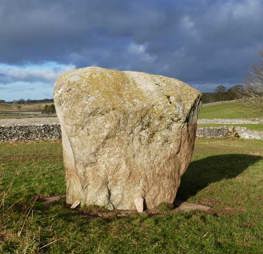History and Heritage of Shap
Shap is steeped in history. Many large stones from an impressive Megalithic avenue and stone circle remain. The Goggleby Stone, one of the stones from the avenue, can be seen alongside the footpath to the hamlet of Keld. The village evolved along the main route between England and Scotland and many buildings date back to the 17th century one of which, the Market Cross, was erected when Shap was granted a market charter in 1687. There were four coaching inns three of which still provide hospitality today.
remain. The Goggleby Stone, one of the stones from the avenue, can be seen alongside the footpath to the hamlet of Keld. The village evolved along the main route between England and Scotland and many buildings date back to the 17th century one of which, the Market Cross, was erected when Shap was granted a market charter in 1687. There were four coaching inns three of which still provide hospitality today.
The coming of the railway, opened in 1846, was a major factor in the growth of the village. Shap Summit, 916ft/279m, is the highest point on the West Coast main line. Passing steam train specials are popular with enthusiasts and photographers.
The summit of the A6 road over Shap Fell is 1392ft/426m above sea level. A memorial erected by Shap Memorial Trust, situated close to the summit, pays tribute to all who used the hazardous route, maintained the road or provided hospitality to stranded travellers. The opening of the M6 motorway in 1970 resulted in much less traffic passing through the village.
The area around Shap is well known for its extraordinary geology. Slate quarries occupy remote locations in Mosedale and Mardale. Limestone, blue granite and the decorative, pink granite are all quarried locally. Shap polished pink granite can be found throughout the country, including outside St Paul’s Cathedral in London. Quarrying activities still play an important part in the economy of the area.




